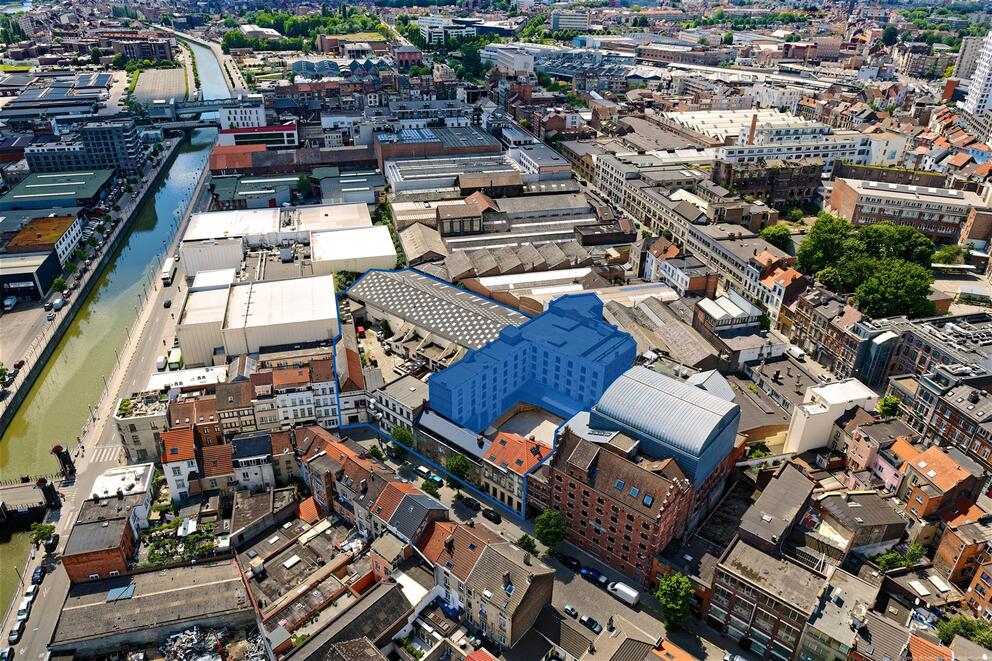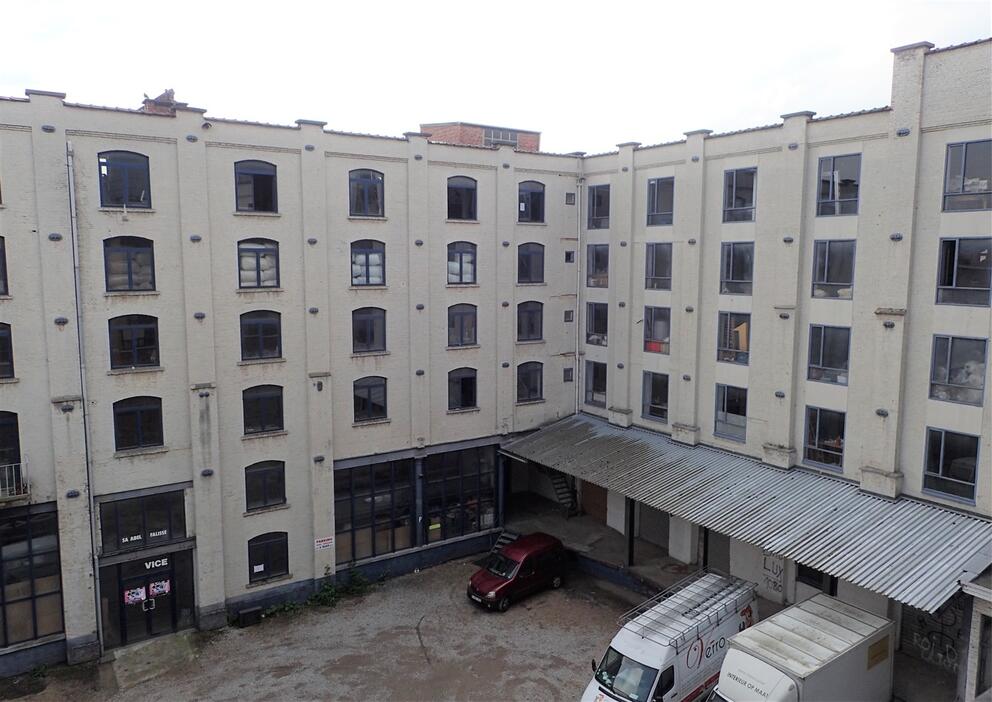Brussels Region picks 12 temporary occupants for part of the buildings at 17-19 Rue de Manchester
After launching a call for expressions of interest (CEI) in March, the Brussels Region, represented by the SAU in its capacity as delegated project manager, has picked 12 out of the 28 applications received. The temporary programme will occupy nearly 3,000 m2 and offer a foretaste of the future Regional artistic and creative hub at Rue de Manchester.
The buildings at 13-15 and 17-19 Rue de Manchester will be turned into premises for cultural, artistic and creative activity and related facilities such as administrative offices, a multipurpose hall and artists’ residences. This is one of the priority projects of the ‘Heyvaert-Poincaré’ Urban Regeneration Contract (CRU 5) funded by the Brussels-Capital Region.
In April 2020, the Brussels Government had already decided that Recyclart asbl’s occupation of the 13-15 Rue de Manchester site should be allowed to continue, in view of the activities that it is developing in relation to the future creative hub.
As it has previously done at other sites, the Region, at the instigation of Minister-President Rudi Vervoort, has decided to make use of the period prior to the work on the artistic and creative hub, which is scheduled to start in mid-2023. It plans to organise a temporary occupation programme for part of the buildings at 17-19 Rue de Manchester. A call for expressions of interest (CEI) was therefore launched for part of the upper floors of the two buildings located in the block’s interior, in the courtyard at 17-19 Rue de Manchester, with a total of nearly 3,000 m² spread over several floors.
Minister-President Rudi Vervoort explained: ‘Along the same lines as our successful ventures in connection with other urban development projects in Brussels, we want to use the preparatory phase of this conversion project to run some temporary projects before the work starts. Spaces like this where people can experiment freely are of the utmost importance. And with the health crisis which has had a serious impact on the cultural and event sectors and on the population, local projects of this kind are of great value. They allow local residents, the entire population of Brussels and visitors to our Capital Region to really make the place their own, to meet up, work together, swap views and so on. This transitional phase will give this place a specific identity that will endure beyond the completion of its temporary use.’
A foretaste of the final project
The Region plans to develop a cultural, artistic and creative hub there, a foretaste of which will be provided by an experimental showcase developed by the SAU. This will be done by means of a coherent temporary project, in which the different occupants will work in synergy rather than autonomously, and consisting of production workshops in the cultural and creative industries and structures firmly rooted in and open to the local community.
A selection committee bringing together various stakeholders including the owner of the premises (SPRB Facilities Directorate) and the municipality of Molenbeek has picked the following temporary occupants, who will start moving in during the month of September:
- ASBL Impulsion: an artistic, socio-cultural and educational project focusing on urban expression (dance, training, production).
- Entropie Production: a production collective supporting emerging artists in the fields of the performing arts, the visual arts and radio art.
- Habemus Papam: an organisation supporting artists in the development of their projects in order to maximise their impact over time.
- Rainbow Nation Brussels: an organisation that seeks to promote the artistic, cultural and civic expression of LGBTQIA+ people.
- Black History Month: a collective of artists working to promote African and Afro-diasporic culture (art / literature / performing arts).
- Dis les Termes: a project for the production of audiovisual and educational content with close links to young people in the local community.
- Podcasting from the margins: a project seeking to give more people a say through social media, blogs and podcasts.
- Cens Academy: an educational and sports project promoting young people’s social and physical development and well-being.
- ATLAS: an educational and artistic project in the fields of set design, choreography and movement.
- Imazi.Reine: an educational and artistic project with a very wide range of activities (artistic work, theatre, exhibitions, colloquia, audiovisual training, round tables).
- Damaged Goods: a project in support of numerous emerging artistic organisations in sectors such as audiovisual production, set design and the visual arts.
- Not only Voices: an inclusive and participatory project in the audiovisual and media sector.
- Several visual artists.
Catherine Moureaux, the mayor of Molenbeek Saint-Jean, stressed: ‘I’m happy to see this joint process between the authorities and local organisations leading to such an outcome today. We wanted these premises to be used optimally – these large empty spaces to be filled with living cultural and social projects. This will now happen: with the 12 projects we’ve selected, we will have 12 dynamic players that will make use of these wonderful premises to develop their creative projects. In addition, and this was a key point for me, the activities that will take place in the buildings will be open to the Duchesse district and its inhabitants.’
Gilles Delforge, director of the SAU, expressed delight at ‘the quality of the applications that the SAU received. The selected project owners will enable the SAU to carry out a further operation that helps make the Region’s land and buildings available to the people of Brussels, as it is already doing through a variety of distinctive temporary occupation programmes: See U in the context of Usquare.brussels, the conversion project at the former Fritz Toussaint barracks, since April 2019; MolenWest next to the Gare de l’Ouest railway station since September 2020; and Summer at Josaphat on the site of the former Josaphat marshalling yard last summer and this summer. Each of these programmes has proved very popular with the public in its own way, even earning the SAU and See U a Visit.brussels Award at the end of 2020.’
Practical details
The selection criteria used by the committee to pick the 12 project owners related to factors such as the potential to offer a foretaste of the future cultural, artistic and creative hub; added value for the district and its inhabitants; the ability to integrate the Region’s vision and ambitions for the site; the ability to fit into a project with a global identity in synergy with the other occupants; the ability to work for the community in the management of the building; the ability to attract notice on a larger scale; the degree of compatibility with the site (its history, its spaces, its spatial constraints, local residents, etc.) and with the other future occupants; technical, financial and administrative feasibility; and the quality of the team.
The spaces will be rented out to the project owners as basic structure plus façades, doors and windows, plus heating and plumbing – a sufficient level of comfort for them to be used as work spaces. The project owners must comply with various rules, including the signing of a short-term occupancy agreement; the payment of rent and a share of the site costs; the obligation to vacate the site by the due date; the self-financing of the investments necessary for the project and the associated expenses; compliance with the applicable regulations and obtaining all the necessary authorisations; the arrangement of insurance cover; etc.


